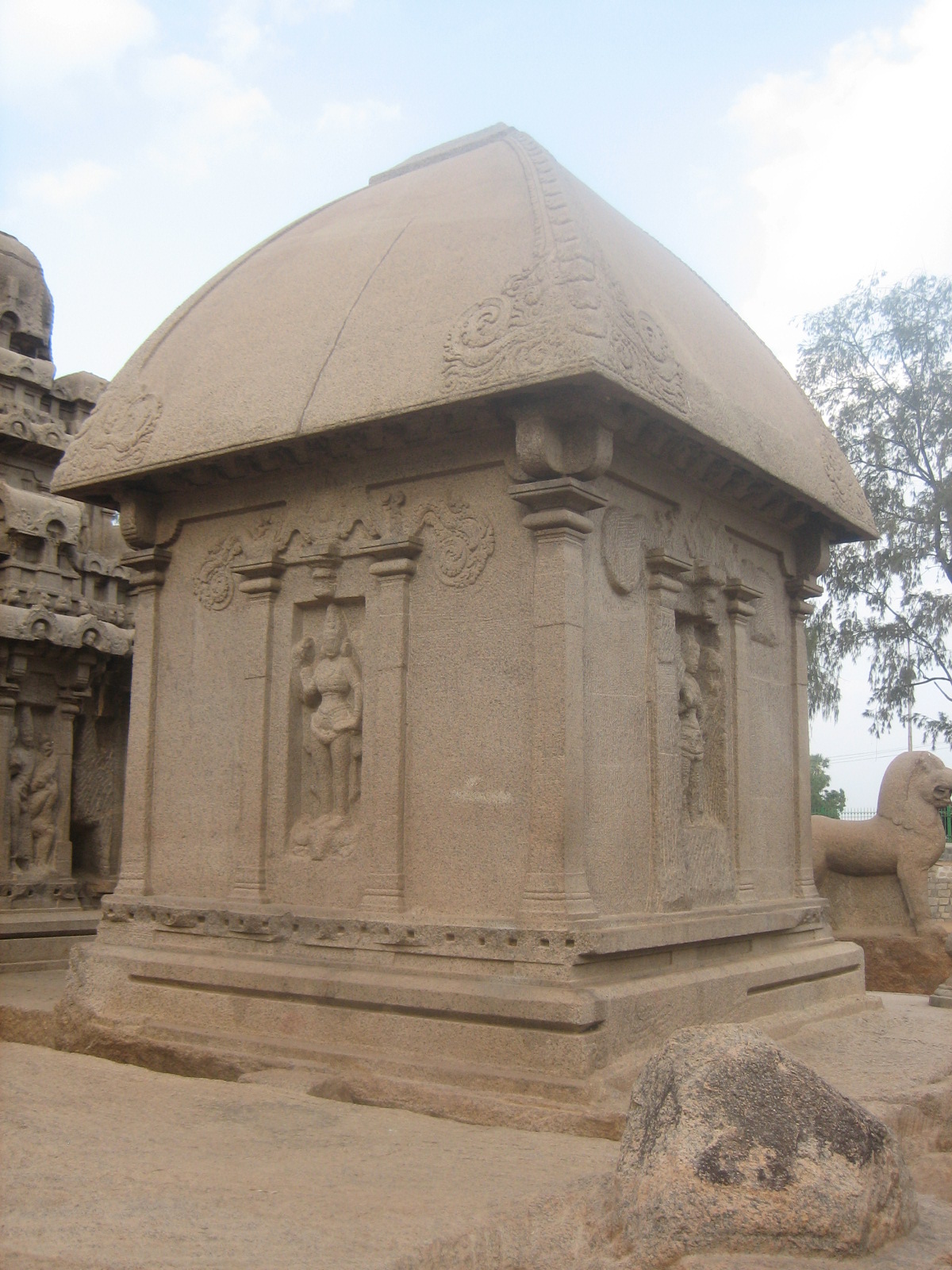

The ratha faces west and is constructed over a square measuring 11 feet. Its curvilinear roof reaches the heights of 18 feet. A finial might have been placed above this roof, however this piece is missing at present. The roof has a foliage and creeper design at its corners. The adhisthana (platform) is built of multiple mouldings; upana, jagati, kampa, kumuda and pattika. The shrine is eka-ratha in plan with a niche in the center of each wall. The niches are topped with a makara-torana with two bends. Figures of Durga standing on a buffalo head are placed in all the three niches. Only the figure on the eastern niche is complete, the rest were left incomplete. The entrance, on the west, has a makara-torana above its lintel. The entrance is guarded by two female dvarapalas (guardians). the dvarapala on the right is holding a sword and the one on the left is holding a bow.


The cell inside the ratha is measures 6.5 feet by 4.5 feet. On the back wall is a figure of Durga as Korravai. She is shown standing on a lotus pedetsal in samabhaga posture. She has four hands, carrying shankha (conch) and chakra (discus) in her upper hands, one lower hand is in abhaya-mudra while another lower hand is resting on her thigh. Two devotees are shown on her either side. One is shown offering flowers while another is holding his hair to make his neck tight in order to put an incise with a knife held in his one hand. Four ganas, two on either side, are shown in the upper corners. We have discussed this form of Korravai and sacrificial mode in our earlier article on the Varaha Mandapa.

A 6-feet high lion is carved in front of the western entrance of this ratha. Whether this lion was associated with the ratha may be contested, however presence of the female dvarapalas, an image of Durga inside the cell and its niches suggest that this ratha was dedicated to Durga and therefore presence of a lion in front of the entrance should not be a surprise. Instead, carving out this animal on a separate boulder, suggest the ingenuity and innovative skills of the artisans of that period.
1 Brown, Percy (1956). Indian Architecture – Buddhist and Hindu Periods. D B Taraporevala Sons & Co Pvt Ltd. Bombay.


hi saurabh,
female door guardians / dvarapalikas..and
ritual self sacrifice was practised – its called navakandam and involves cutting off bodily parts one by one. there are many inscriptions on this and the family of such ( eg: when done to bring good fortune a king's campaign etc) were rewarded with land and higher stature.
vj
Hi vj,
Thanks a lot for this information, I have updated this in the article.
Very exhaustive and informative. It looks like a full fledged research paper.
Great job! Saurabh.
so much information..you are cool